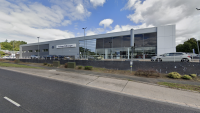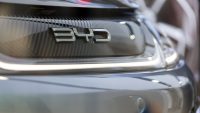Tesla’s Autopilot mode can be easily fooled into continuing without a driver, an investigation has found days after a fatal crash.
US magazine Consumer Reports said its engineer was able to make a Tesla Model Y continue to travel on a test track even after moving out of the driver’s seat.
The car automatically steered between white lane lines at speeds of up to 30mph.
It was tricked into keeping Autopilot on by not unfastening the driver’s seat belt, not opening any doors when the engineer moved to the front passenger seat, and wrapping a weighted chain around the steering wheel to simulate a driver’s hand.
As reported by Car Dealer, two men were killed last weekend when a Tesla Model S crashed into a tree in Texas.
Police believe no-one was in the driver’s seat when it happened.
Tesla boss Elon Musk subsequently tweeted that ‘data logs recovered so far show Autopilot was not enabled’, adding: ‘Moreover, standard Autopilot would require lane lines to turn on, which this street did not have.’
The crash is being probed by the National Highway Traffic Safety Administration and the National Transportation Safety Board.
Tesla’s website says that Autopilot lets a car steer, accelerate and brake automatically within its lane, but its current features ‘require active driver supervision and do not make the vehicle autonomous’.
Consumer Reports said the Model Y was ‘easily tricked’ in its test, and warned the scenario would ‘present extreme danger if it were repeated on public roads’.
Jake Fisher, the magazine’s senior director of auto testing, who carried out the experiment, said: ‘The car drove up and down the half-mile lane of our track repeatedly, never noting that no one was in the driver’s seat, never noting that there was no one touching the steering wheel, never noting there was no weight on the seat.
‘It was a bit frightening when we realised how easy it was to defeat the safeguards, which we proved were clearly insufficient.’
Tesla did not immediately respond to a request by the PA news agency for a comment.


































